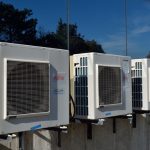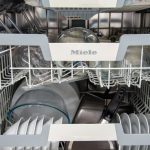Heat recovery is the act of replacing heat lost. Maintaining heat is importing in many situations, especially in factory settings. Industries needing to maintain a certain temperature such as nuclear power plants and chemical processing stations have to factor in many elements. Humidity, dust and pollutants also have to be considered when maintaining a healthy air quality.
When dealing with factory cooling, methods such as evaporative cooling or fog cooling are used to cool the temperature, which can create a humid environment in a well enclosed area. Bacteria, mold and other pollutants in the air thrive in a humid environment. In order to protect against the growth of such health risks, factories will install a ventilation system. Pushing in air, can alleviate the problem of humidity, but brings about another issue.
Air from outside can carry pollutants. While pushing pollutants in, no stale air is being pushed out. Besides pollutants, air from outside can carry different temperatures depending on the weather as well. This could cause heat loss inside the factory. That is where heat recovery comes in. Heat recovery is a simple process that can save up to 85% of heat loss.
Heat recovery systems require at least two fans. One fan will push the stale air from inside the building out as the other fan pulls fresh air in. The fresh air side of the ventilation will contain filters to keep the pollutants from outside from entering the building. The heat recovery system is designed so that both the fresh air and the stale air are pushed through several passages that are next to each other. The warmth from the stale is transfers to the fresh air without every mixing. Because some areas can build humidity, pollutants, or become stale faster, most heat recovery systems allow the fan speed to be set manually by the user.
Because the heat recovery systems can save so much heat, it can help lower a heating bill greatly and so is a great option for factory heating as well as assisting a factory cooling system by maintaining a healthy air quality. Heat recovery systems can help keep the pollutants from new materials used to build buildings moving out of the structure. Due to the many uses a heat recovery system can provide, heat recovery systems can be found not only in factories but in corporate buildings, businesses and even homes.
Articles from the same category:
- Mastering NSPIRE Standards Training and HUD Housing Management Best Practices for Success
- Thinking About Putting Your Home On The Market? Read These Tips!
- Growing along with Adapting Your own Commercial Real Estate Agent Relationships
- The future of the Australian property market
- Thinking Of Selling Your Home? These Tips Can Really Help
- Selling Real Estate In This Era – The Best Tips Available!
- How I Stored the Widow’s Home








